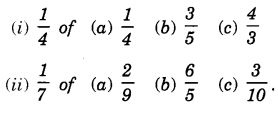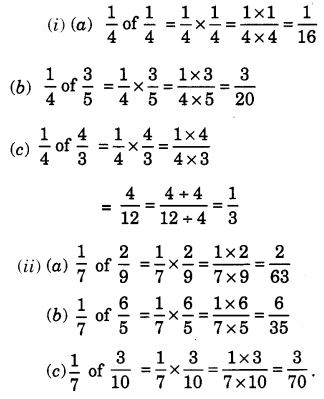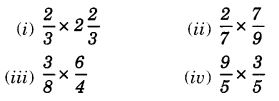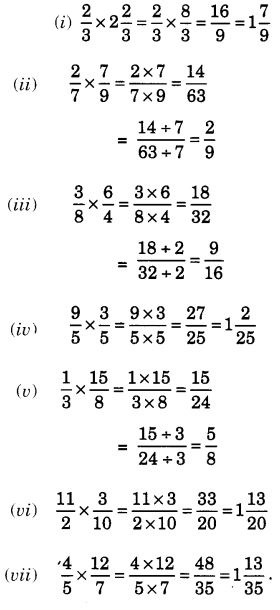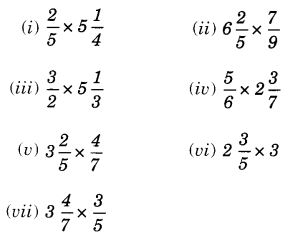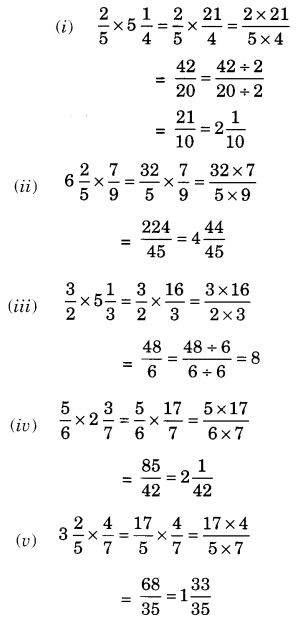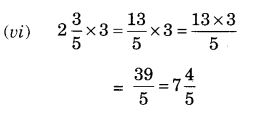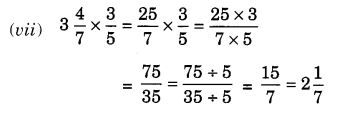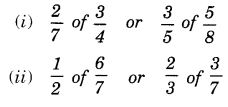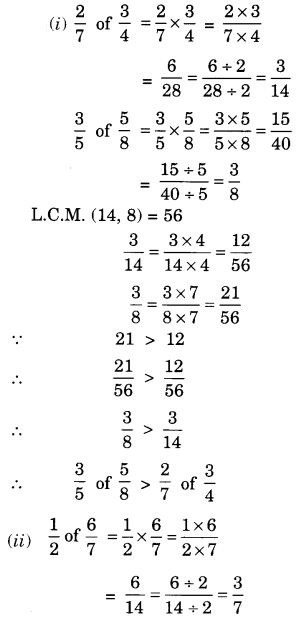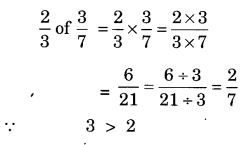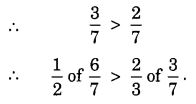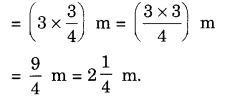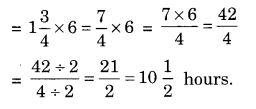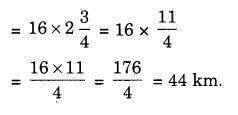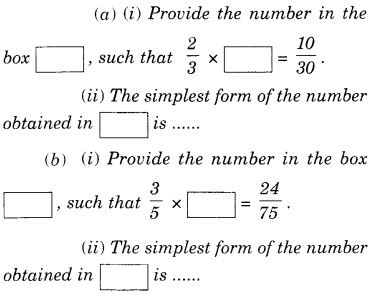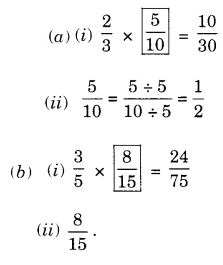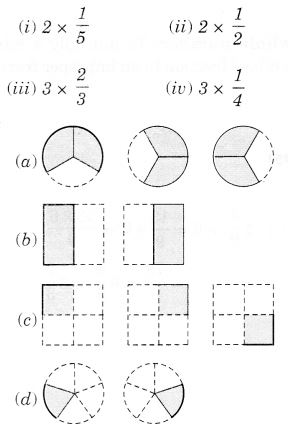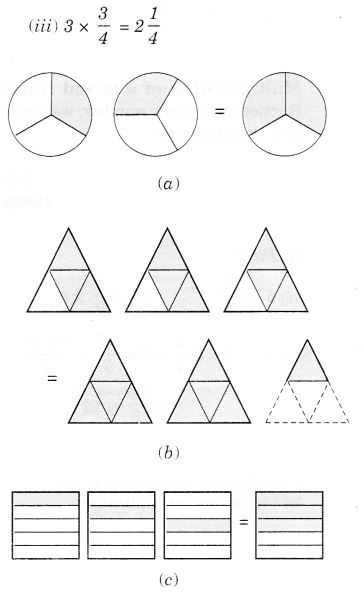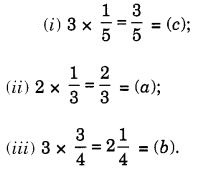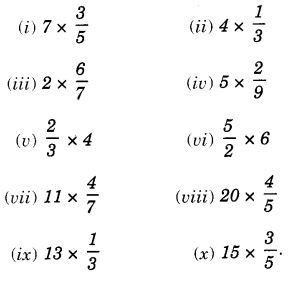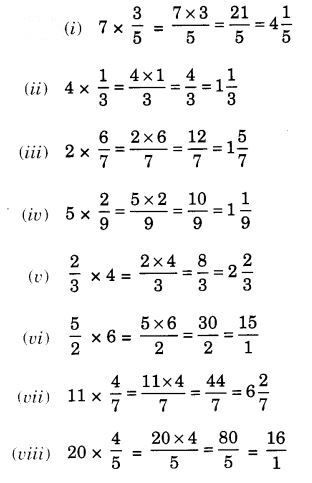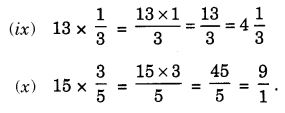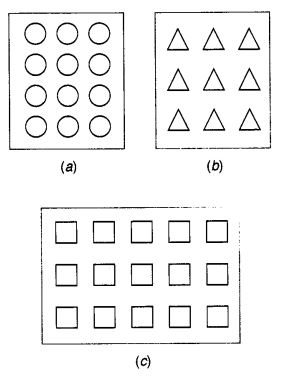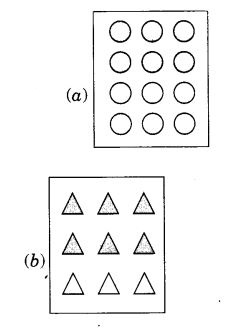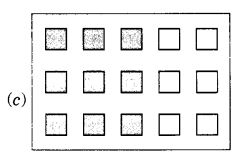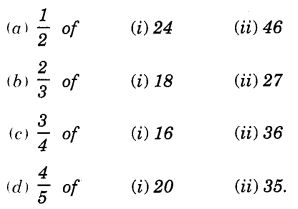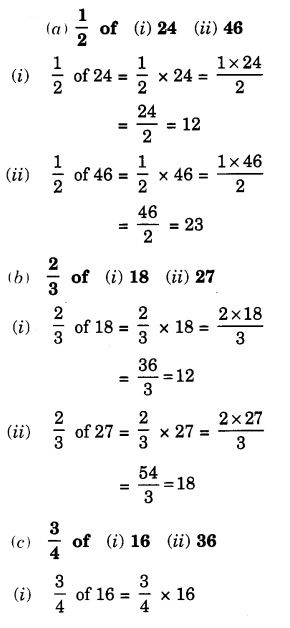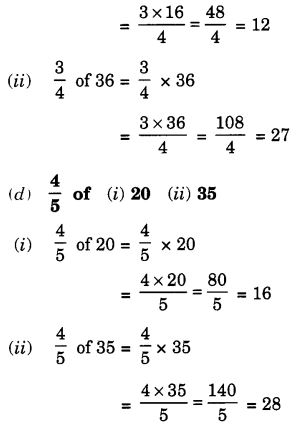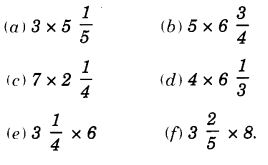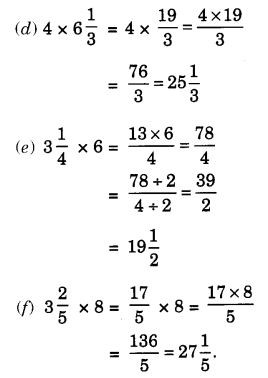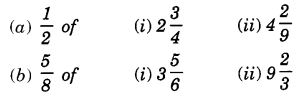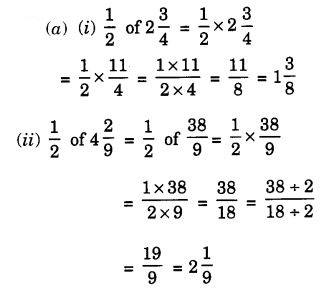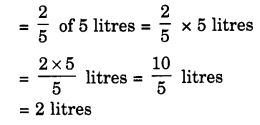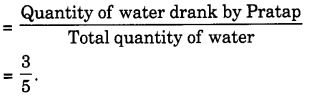NCERT Solutions for Class 7 Maths Chapter 1 Integers Ex 1.3 are part of NCERT Solutions for Class 7 Maths. Here we have given NCERT Solutions for Class 7 Maths Chapter 1 Integers Ex 1.3.
| Board | CBSE |
| Textbook | NCERT |
| Class | Class 7 |
| Subject | Maths |
| Chapter | Chapter 1 |
| Chapter Name | Integers |
| Exercise | Ex 1.3 |
| Number of Questions Solved | 9 |
| Category | NCERT Solutions |
NCERT Solutions for Class 7 Maths Chapter 1 Integers Ex 1.3
Question 1.
Find each of the following products:
(a) 3 × (- 1)
(b) (- 1) × 225
(c) (-21) × (- 30)
(d) (- 316) × (- 1)
(e) (- 15) × 0 × (- 18)
(f) (- 12) × (- 11) × (10)
(g) 9 × (-3) × (-6)
(h) (- 18) ×(-5)× (- 4)
(i) (- 1) × (-2) × (-3) × 4
(j) (- 3) × (- 6) × (-2) × (- 1).
Solution:
(a) 3 x (- 1) = – (3 x 1) = – 3
(b) (- 1) x 225 = – (1 x 225) = – 225
(c) (- 21) x (- 30) = 21 x 30 = 630
(d) (- 316) x (- 1) = 316 x 1 = 316
(e) (- 15) x 0 x (- 18) = [(- 15) x 0] x (- 18) = 0 x (- 18) = 0
(f) (- 12) x (- 11) x (10) = [(- 12) x (- 11)] x (10) = (132) x (10) = 1320
(g) 9 x (- 3) x (- 6) = [9 x (- 3)] x (- 6) = (- 27) x (- 6) = 162
(h) (- 18) x (- 5) x (- 4) = [(- 18) x (- 5)] x (- 4) = 90 x (- 4) = – 360
(i) (- 1) x (- 2) x (- 3) x 4 = [(- 1) x (- 2)] x [(- 3) x 4] = (2)x (- 12) = -24
(j) (- 3) x (- 6) x (- 2) x (- 1) = [(- 3) x (- 6)] x [(- 2) x (- 1)] = (18) x (2) = 36
Question 2.
Verify the following:
(a) 18 × [7 + (- 3)] = [18 × 7] + [18 × (- 3)]
(b) (-21)×[(-4) + (-6)] = [(-21) × (-4)] + [(-21) × (-6)
Solution:
(a) 18 × [7 + (- 3)] = [18 × 7] + [18 × (- 3)]
L.H.S. = 18 × [7 + (- 3)]
= 18 × L(7 – 3)] = 18 × (4) = 18 × 4 = 72
R.H.S. = [18 × 7] + [18 × (- 3)]
= 126 + [- (18 × 3)] = 126 + (- 54) = 126 – 54 = 72
So, 18 × [7 + (- 3)]
= [18 × 7] + [18 × (- 3)]
(b) (- 21) × [(- 4) + (- 6)] = [(- 21) × (- 4)] + [(- 21) × (- 6)]
L.H.S. = (- 21) × [(- 4) + (- 6)]
= (- 21) × (- 10)
= 21 × 10 = 210
R. H.S. = [(- 21) × (- 4)] + [(- 21) × (- 6)]
= (21 × 4) + (21 × 6)
= 84 + 126 = 210
So, (- 21) × [(- 4) + (- 6)]
= [(- 21) × (- 4)] + [(- 21) × (- 6)].
Question 3.
(i) For any integer a, what is (-1)×a equal to?
(ii) Determine the integer whose product with (- 1) is
(a) – 22
(b) 37
(c) 0.
Solution:
(i) For any integer a, (-1) x a = -a.
(ii) We know that the product of any integer and (-1) is the additive inverse of an integer.
The integer whose product with (-1) is
(a) additive inverse of -22, t. e., 22.
(b) additive inverse of 37, i.e., -37.
(c) additive inverse of 0, i.e., 0.
Question 4.
Starting from (- 1) × 5, write various products showing some pattern to show (- 1) × (-1) – 1.
Solution:
(- 1) × 5 = – 5
(- 1) × 4 = – 4 [= (- 5) + 1]
(- 1) × 3 = – 3 [= (- 4) + 1]
(- 1) × 2 = – 2 [= (- 3) + 1]
(- 1) × 1 = – 1 [= (- 2) + 1]
(- 1) × 0 = 0 [= (- 1) + 1]
(- 1) × (- 1) = 1 [= 0 + 1]
Question 5.
Find the product, using suitable properties:
(a) 26 × (- 48) + (- 48) × (- 36)
(b) 8 × 53 × (- 125)
(c) 15×(-25)×(-4)×(- 10)
(d) (-41) × 102
(e) 625 × (-35) + (- 625) × 65
(f) 7 × (50 -2)
(g) (-17) × (-29)
(h) (- 57) ×(-19)+ 57.
Solution:
(a) We have, 26 x (-48) + (- 48) x (- 36)
= (- 48) x 26 + (- 48) x (- 36)
= (- 48) x [26 + (- 36)]
= (- 48) x (26 – 36)
=(- 48) x (- 10)= 480
(b) We have,
8 x 53 x (- 125) = [8 x (- 125)] x 53
= (- 1000) x 53 = – 53000
(c) We have,
15 x (- 25) x (- 4) x (- 10)
=15 x [(- 25) x (-4)] x (- 10)
= 15 x (100) x (- 10)
= (15 x 100) x (- 10)
= 1500 x (- 10) = – 15000
(d) We have,
(- 41) x 102 = (- 41) x (100 + 2)
= (- 41) x 100 + (- 41) x 2 = -4100 – 82 = – 4182
(e) We have, 625 x (- 35) + (- 625) x 65
= 625 x (- 35) + (625) x (- 65)
= 625 x [(- 35)+ (- 65)]
= 625 x (- 100) = – 62500
(f) 7 x (50 – 2) = 7 x 50 – 7 x 2
= 350 -14 =336
(g) (-17) x (- 29) = (-17) x [(- 30) + 1]
= (- 17) x (- 30) + (- 17) x 1 = 510 – 17 = 493
(h) (- 57) x (-19)+ 57 =57 x 19 + 57 x 1
= 57 x (19 +1)
= 57 x 20 = 1140
Question 6.
A certain freezing process requires that room temperature be lowered from 40°C at the rate of 5° C every hour. What will be the room temperature 10 hours after the process begins?
Solution:
Room temperature 10 hours after the process begins
= 40°C – 10 × 5°C
= 40°C – 50°C
= – (50 – 40)°C = – 10°C
Question 7.
In a class test containing 10 questions, 5 marks are awarded for every correct answer and (-2) marks are awarded for every incorrect answer and 0 for questions not attempted.
(i) Mohan gets four correct and si× incorrect answers. What is his score?
(ii) Reshma gets five correct answers and five incorrect answers, what is her score?
(iii) Heena gets two correct and five incorrect answers out of seven questions she attempts. What is her score?
Solution:
(i) Mohan gets for four correct answers 4 × 5 = 20 marks
He also gets for si× incorrect answers. 6 × (- 2) = – 12 marks.
Therefore, Mohan’s score = 20 + (- 12) = 20-12 = 8 marks.
(ii) Reshma gets for five correct answers 5 × 5 = 25 marks
She also gets for five incorrect answers 5 × (- 2) = – 10 marks Therefore, Reshma’s score = 25 + (- 10) = 25-10 = 15 marks.
(iii) Heena gets for two correct answers
2 × 5 = 10 marks.
She also gets for five incorrect answers 5 × (- 2) = – 10 marks
She didn’t attempt three questions. For these, she gets 3×0 = 0 marks
Therefore, Heena’s score = 10 + (- 10) + 0 = 10 – 10 + 0 = 0 marks.
Question 8.
A cement company earns a profit of ₹ 8 per bag of white cement sold and a loss of ₹ 5 per bag of grey cement sold.
(a) The company sells 3,000 bags of white cement and 5,000 bags of grey cement in a month. What is its profit or loss?
(b) What is the number of white cement bags it must sell to have neither profit nor loss if the number of grey bags sold is 6,400 bags.
Solution:
(a) The company sells 3,000 bags of white cement. So her profit = 3,000 × 8 = ₹ 24,000
Also, the company sells 5,000 bags of grey cement. So her loss = 5,000 × 5 = ₹ 25,000
Since 25,000 > 24,000
Therefore, the company is at a loss and the loss is = 25000 – 24000 = ₹ 1000
(b) Let ‘×’ be the number of white cement bags sold.
According to the question, we get
x × 8 = 6400 × 5
⇒ x = \(\frac { 6400\times 5 }{ 8 }\) = 800 × 5 = 4,000 bags.
Therefore, 4,000 bags of white cement must be sold to have neither profit nor loss.
Question 9.
Replace the blank with an integer to make it a true statement.
- (a) (- 3) × …….. = 27
- (b) 5 × …….. = -35
- (c) …….. × (- 8) = – 56
- (d) …….. × (- 12) = 132.
Solution:
- (a) (-3) x (- 9) = 27
- (b) 5 x (-7) = (-35)
- (c) 7 x (-8) = (-56)
- (d) (-11) x (-12) = 132
We hope the NCERT Solutions for Class 7 Maths Chapter 1 Integers Ex 1.3 help you. If you have any query regarding NCERT Solutions for Class 7 Maths Chapter 1 Integers Ex 1.3, drop a comment below and we will get back to you at the earliest.
